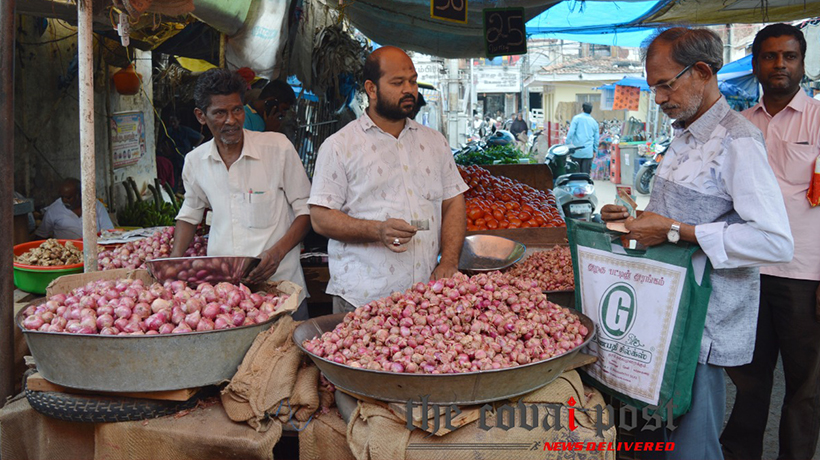Trending Now
- IPL 2024 begins with a bang. First contest between CSK and RCB.
- Election commission allots mike symbol to Naam Thamizhar Katchi
- AIADMK promises to urge for AIIMS in Coimbatore, in its election manifesto.
- Ponmudi becomes higher education minister.
Coimbatore
Egypt onion vs the Indian onion, what is the difference?
![]() December 11, 2019
December 11, 2019
Onions being the backbone of Indian cuisine, consumers are left with no choice but to spend through their noses following the steep rise in onion price over the last few weeks. The onion crisis has rendered the households pockets thin.
In India, onions are grown throughout the year over three harvest seasons. The incessant Northeast monsoon rains had affected the kharif harvest (between October and December) leading to insufficiency in onion stalks and thus resulting in a major loss to the farmers.
In a bid to control the crisis, the Government halted exports and took steps to import onions from Egypt, Turkey and Afghanistan. They are also keeping a close eye on possible hoarders.
The arrival of red onions from Egypt to Coimbatore has helped tide over the shortage. This, despite the difference from the usual yellow onions we Indians are used to, the red ones that have arrived are considered an almost identical alternative.
The yellow onions or brown onions are the most used onions in the world. It is also called the golden onion. People prefer these varieties as it is the cheapest and most versatile compared to others.
No wonder it is called the all purpose onion. These mostly used for stews, stalks, gravies and meat preparations.
The red onion is the prettiest of all onions because of its deep purple shade. It is mostly used in French cuisine for aesthetic purposes.
It also has a pungent sting akin to yellow variety though comparatively milder. These can be used for salads, salsa and toppings for sandwiches.
Caramelising onions forms the base for many Indian dishes, and red onions do not caramelise as well as the yellow ones. This is because the sulphur and sugar content in the red onion is lower than the yellow onion.
But that does not mean red onions cannot be caramelised, only difference is, the taste will be milder. But it can be used as an efficient alternative for gravies, sabjis, and even biriyanis.
So it may not affect Indian cooking much. However the sting and spice that we Indians are fond of will be down a notch. What it lacks in spice will be made up in crunch factor.
Yes, it is crunchier than yellow onions and the raitas will taste better. But no matter the difference, the benefit any onion holds in its globular form is endless.






















